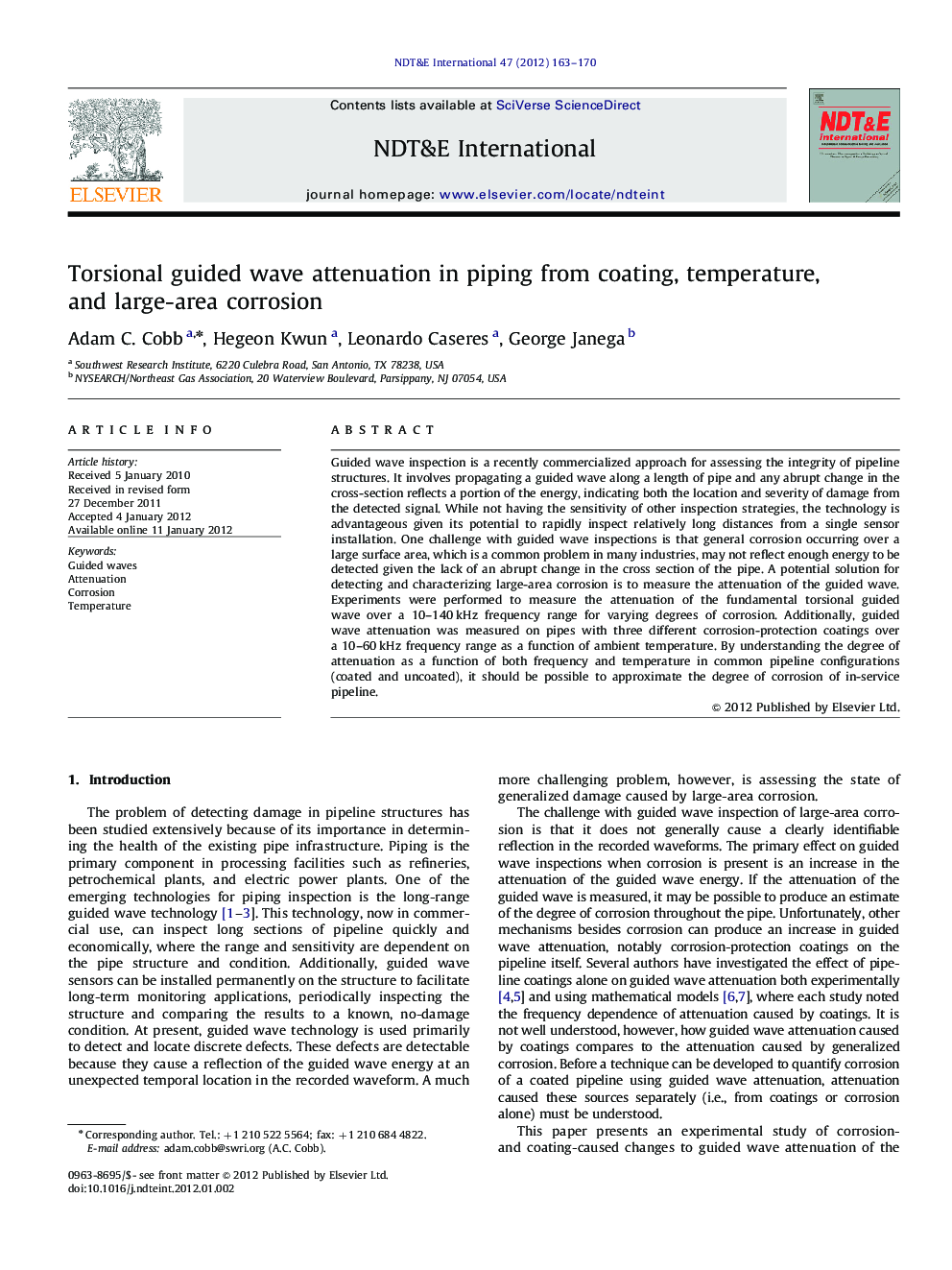| Article ID | Journal | Published Year | Pages | File Type |
|---|---|---|---|---|
| 295324 | NDT & E International | 2012 | 8 Pages |
Guided wave inspection is a recently commercialized approach for assessing the integrity of pipeline structures. It involves propagating a guided wave along a length of pipe and any abrupt change in the cross-section reflects a portion of the energy, indicating both the location and severity of damage from the detected signal. While not having the sensitivity of other inspection strategies, the technology is advantageous given its potential to rapidly inspect relatively long distances from a single sensor installation. One challenge with guided wave inspections is that general corrosion occurring over a large surface area, which is a common problem in many industries, may not reflect enough energy to be detected given the lack of an abrupt change in the cross section of the pipe. A potential solution for detecting and characterizing large-area corrosion is to measure the attenuation of the guided wave. Experiments were performed to measure the attenuation of the fundamental torsional guided wave over a 10–140 kHz frequency range for varying degrees of corrosion. Additionally, guided wave attenuation was measured on pipes with three different corrosion-protection coatings over a 10–60 kHz frequency range as a function of ambient temperature. By understanding the degree of attenuation as a function of both frequency and temperature in common pipeline configurations (coated and uncoated), it should be possible to approximate the degree of corrosion of in-service pipeline.
